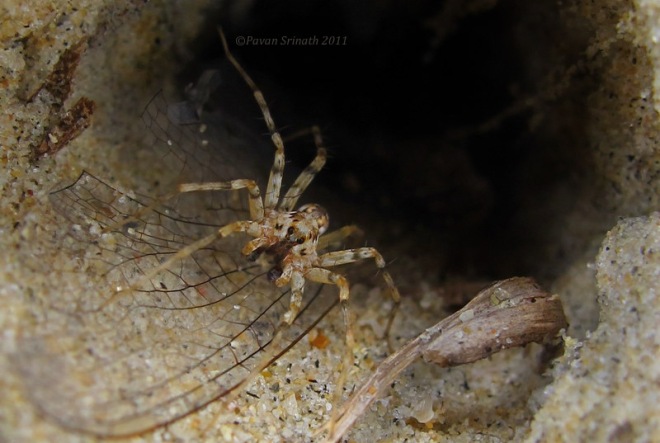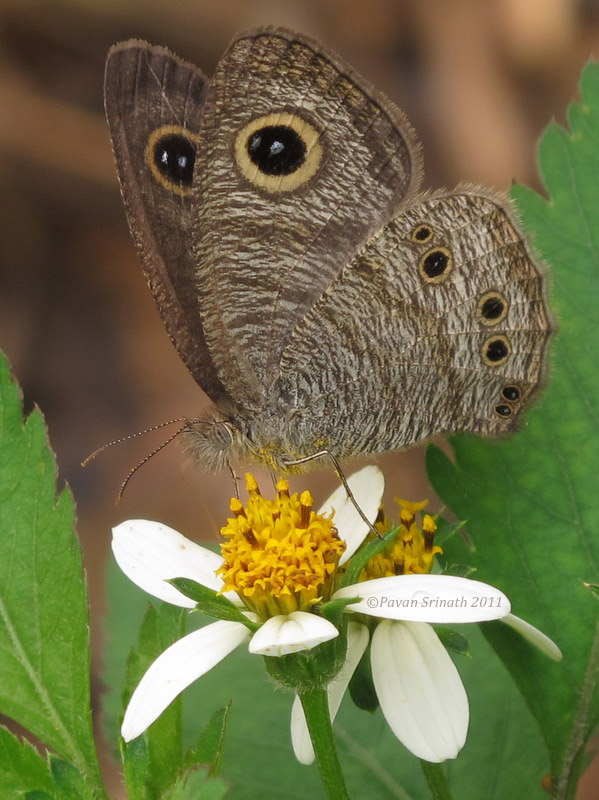Today’s critter is a Wolf Spider with a no-nonsense attitude.
Usually wolf spiders that dwell in holes or funnel webs beat a quick retreat into their holes when a camera lens comes looking. Not this guy. He’s recently (?) dragged in a dragonfly, and he’s not about to give it up to anyone. Not without a fight, at any rate.
Their eyesight is not exactly as good as that of jumping spiders, but I’ve never had one of those get into a staring contest with my camera before. Standing over a kill, mammals usually growl under their breath. Spiders just give you a look.
Oh, and I’ll probably be off on a little trip with the folks by the time you read this! Heading down to Mysore and thereabouts, there are a bunch of old temples that have slipped under my radar, and then there are some that I haven’t checked out since I was 10. Follow me on Twitter and keep an eye on my other photo blog It’s a long way to Thipparalli if you want to know more.
Cheerio. Tomorrow’s post has been uploaded as well. Fear not, you shall have it in your inbox / facebook wall feed / google reader / source of choice. 🙂











